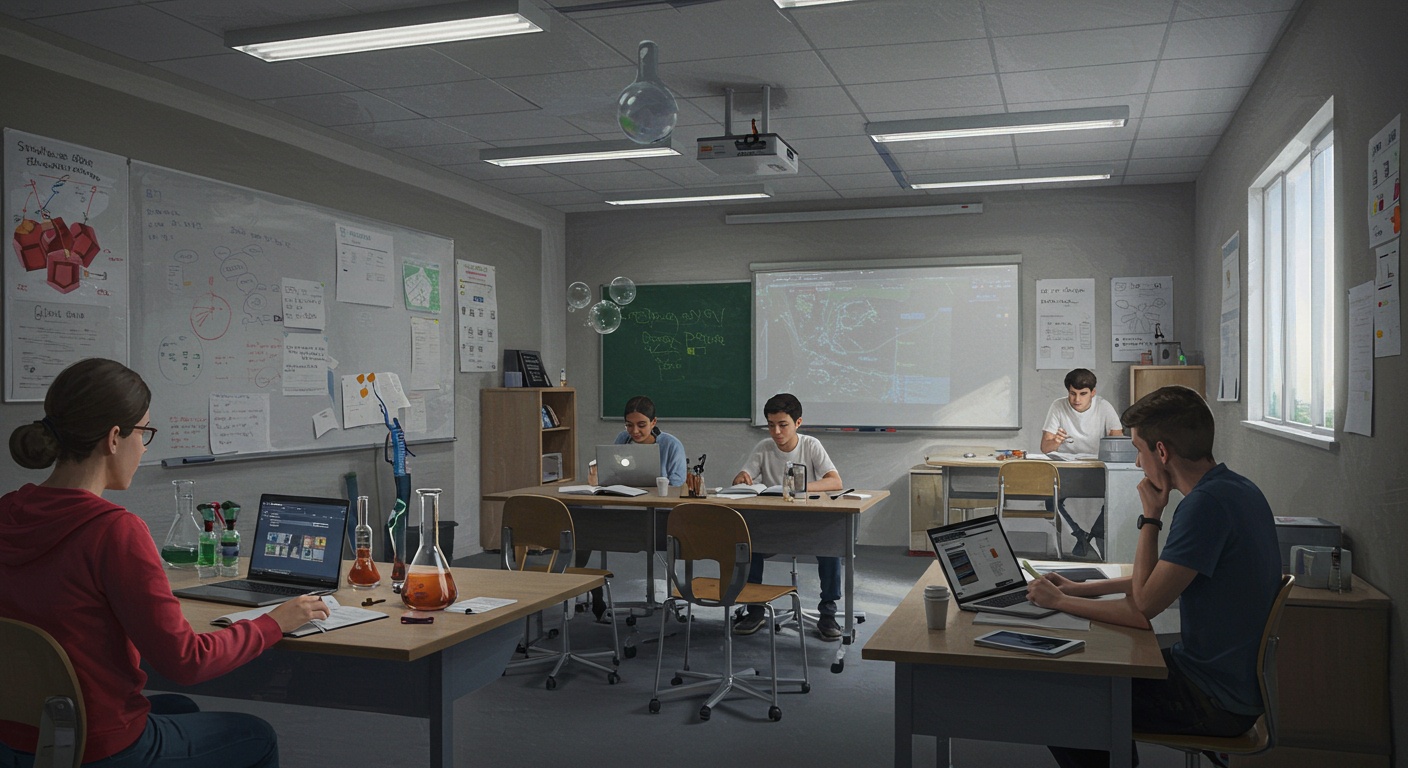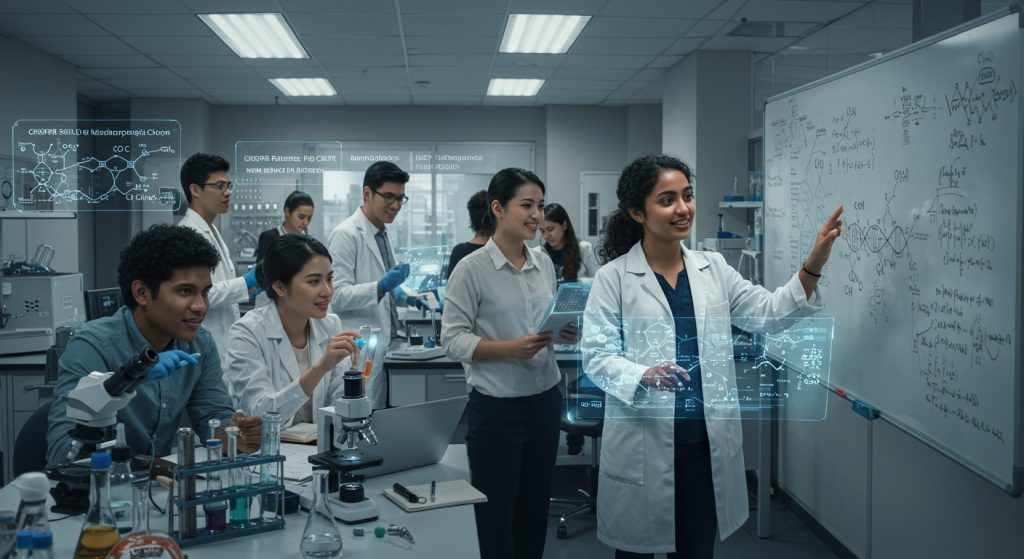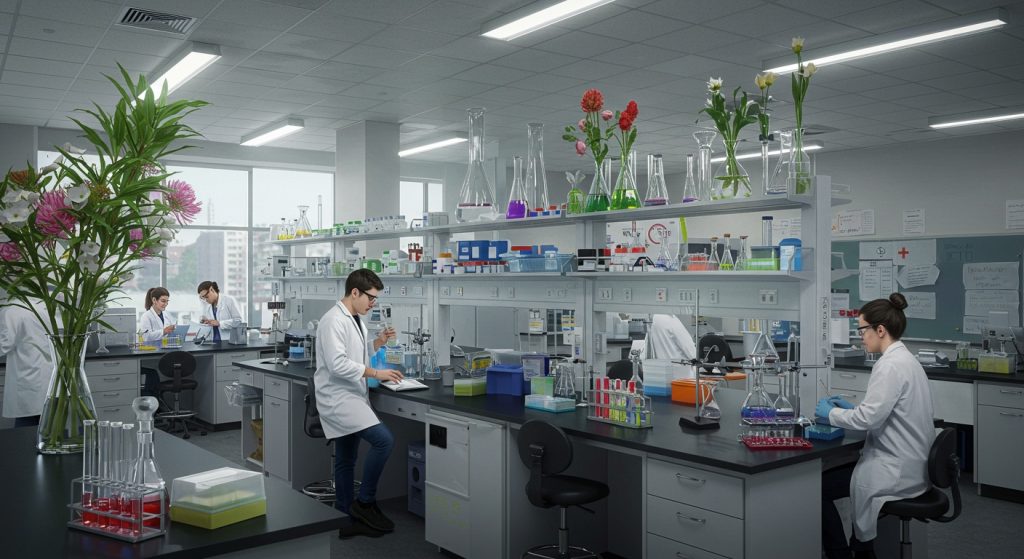Imagine bacteria engineered to consume plastic waste, or gene drives rewriting entire mosquito populations to combat malaria. Synthetic biology, fueled by CRISPR and rapidly decreasing DNA synthesis costs, promises unprecedented solutions. Yet, this power demands careful consideration. Recent advancements, like the creation of synthetic human embryos, highlight the ethical tightrope we walk. Questions abound: Who decides acceptable risk when releasing engineered organisms into the environment? How do we ensure equitable access to the benefits of synthetic biology while mitigating potential biosecurity threats? Navigating these uncharted waters requires a robust ethical framework, one that fosters innovation while safeguarding humanity and the planet.

What is Synthetic Biology?
Synthetic biology is a multidisciplinary field that combines biology and engineering principles to design and construct new biological parts, devices. Systems, or to redesign existing, natural biological systems. It’s essentially about making biology easier to engineer.
Unlike traditional genetic engineering, which typically involves transferring genes from one organism to another, synthetic biology aims to create entirely new biological functions. Think of it as building with biological LEGOs, where individual parts can be combined to create novel behaviors.
Key aspects of synthetic biology include:
- Standardization: Developing standardized biological parts (like promoters, ribosome binding sites. Coding sequences) that can be easily characterized and combined.
- Modularity: Designing biological systems as modular components that can be assembled in different configurations to achieve different functions.
- Abstraction: Representing biological systems at different levels of abstraction, allowing engineers to focus on the high-level design without needing to comprehend all the underlying details.
Core Technologies and Techniques
Synthetic biology relies on several cutting-edge technologies:
- DNA synthesis: The ability to synthesize DNA sequences from scratch, allowing for the creation of entirely new genes and genetic circuits. Companies like Twist Bioscience and GenScript specialize in this.
- Genome editing: Technologies like CRISPR-Cas9 allow for precise and targeted modifications to an organism’s genome. This is crucial for both creating new biological systems and refining existing ones.
- High-throughput screening: Automated methods for testing the function of large numbers of genetic constructs, enabling rapid prototyping and optimization.
- Computational modeling: Using computer models to simulate the behavior of biological systems, helping to predict how they will function and optimize their design.
These technologies are often integrated, with computational models guiding the design of DNA sequences, which are then synthesized, assembled into genetic circuits. Tested using high-throughput screening. CRISPR-Cas9 is then used to precisely integrate these circuits into the host organism’s genome.
Real-World Applications of Synthetic Biology
Synthetic biology is already making a significant impact in various fields:
- Healthcare: Engineering microbes to produce pharmaceuticals, such as artemisinin (an anti-malarial drug) or insulin. Developing biosensors that can detect diseases early on. Creating personalized medicine approaches.
- Energy: Engineering microbes to produce biofuels, such as ethanol or biodiesel, from renewable resources. Developing microbial fuel cells that can generate electricity from organic waste.
- Materials: Engineering microbes to produce novel materials, such as spider silk or bioplastics. Creating self-healing materials.
- Agriculture: Engineering crops to be more resistant to pests and diseases. Developing nitrogen-fixing microbes that can reduce the need for fertilizers.
- Environmental Remediation: Engineering microbes to degrade pollutants, such as oil spills or plastic waste. Developing biosensors to monitor environmental contamination.
One compelling example is the development of engineered bacteria to produce biodegradable plastics. Traditional plastics are a major source of pollution. These engineered bacteria can produce plastics that break down naturally in the environment.
Ethical Considerations and Concerns
The power of synthetic biology comes with significant ethical responsibilities. Some key concerns include:
- Safety: The potential for engineered organisms to escape from the lab and cause unintended consequences in the environment. This includes the potential for horizontal gene transfer, where engineered genes could spread to other organisms.
- Security: The risk of synthetic biology being used to create bioweapons or other harmful agents. The accessibility of DNA synthesis technologies raises concerns about misuse.
- Environmental Impact: The potential for engineered organisms to disrupt ecosystems or outcompete native species. Careful risk assessment is crucial before releasing engineered organisms into the environment.
- Equity: The potential for synthetic biology to exacerbate existing inequalities, particularly in access to healthcare and resources. Ensuring equitable access to the benefits of synthetic biology is essential.
- Intellectual Property: The ownership and control of synthetic biology technologies. The potential for these technologies to be used in ways that are not in the public interest.
- Dual Use Research: Research that has the potential to be used for both beneficial and harmful purposes. The development of new gene editing technologies, for example, could be used to cure diseases. Could also be used to create bioweapons.
Navigating the Ethical Landscape: Regulations and Guidelines
Addressing these ethical concerns requires a multi-faceted approach involving regulations, guidelines. Public engagement. Several organizations are working to promote responsible innovation in synthetic biology:
- Government Regulations: Agencies like the Environmental Protection Agency (EPA) and the Food and Drug Administration (FDA) in the United States regulate the use of synthetic biology in various applications. These regulations aim to ensure the safety and environmental impact of engineered organisms.
- International Guidelines: Organizations like the World Health Organization (WHO) are developing guidelines for the responsible development and use of synthetic biology.
- Self-Regulation by the Scientific Community: Scientists and engineers working in synthetic biology have a responsibility to conduct their research ethically and to promote the responsible use of these technologies. This includes adhering to established safety protocols and engaging in open and transparent communication with the public.
- Public Engagement: Engaging the public in discussions about the ethical implications of synthetic biology is crucial for building trust and ensuring that these technologies are used in ways that benefit society.
Comparing Synthetic Biology to Genetic Engineering
While both synthetic biology and genetic engineering involve manipulating an organism’s DNA, there are key differences:
| Feature | Genetic Engineering | Synthetic Biology |
|---|---|---|
| Approach | Transferring genes from one organism to another. | Designing and constructing new biological parts and systems. |
| Complexity | Typically involves modifying a single gene or a small number of genes. | Can involve creating complex genetic circuits and pathways. |
| Goal | To improve or modify an existing organism. | To create entirely new biological functions. |
| Standardization | Less emphasis on standardization. | Strong emphasis on standardization and modularity. |
Genetic engineering is akin to modifying an existing car, while synthetic biology is like designing and building a new car from scratch, using standardized parts.
The Role of Biotechnology in Synthetic Biology
Biotechnology encompasses a wide range of technologies that utilize biological systems for various applications. Synthetic biology is a key component. Biotechnology provides the tools and knowledge necessary for synthetic biology to thrive, including:
- Enzymes and proteins: Biotechnology has developed methods for producing and purifying enzymes and proteins that are essential for DNA synthesis, genome editing. Other synthetic biology techniques.
- Cell culture techniques: Biotechnology provides the methods for growing and maintaining cells in the lab, which is necessary for engineering and testing synthetic biological systems.
- Analytical techniques: Biotechnology provides the tools for analyzing the function of synthetic biological systems, such as measuring gene expression, protein production. Metabolic activity.
Synthetic biology, in turn, advances biotechnology by providing new tools and approaches for engineering biological systems. For example, synthetic biology can be used to design and construct new enzymes with improved catalytic activity or to create new metabolic pathways for producing valuable compounds. The intersection of biotechnology and synthetic biology is driving innovation in a wide range of fields, from healthcare to energy to agriculture.
Conclusion
Navigating the ethical landscape of synthetic biology demands more than just awareness; it requires proactive engagement. As CRISPR-based gene editing becomes increasingly precise and accessible, influencing everything from agriculture to medicine, the potential for unintended consequences grows exponentially. My personal takeaway from researching this field? Don’t just be a passive observer. Engage in informed discussions, support research into ethical frameworks. Demand transparency from companies working in this space. Recent advancements, like the development of more controlled gene drives, offer a glimpse into safer applications. Only if guided by robust ethical considerations. Think of it this way: we’re building the tools for a better future. It’s our responsibility to ensure those tools are used wisely. Let’s not shy away from the difficult conversations; let’s shape the future of synthetic biology, ethically and responsibly, for the betterment of all.
More Articles
Top Universities: Your Guide to the Best German Engineering Programs
Unlock Funding: Essential Guide to Scholarships for International Students in Germany
Budget-Friendly Guide: What is the Real Cost of Living in Germany?
A Complete Guide: Navigating Student Life in Germany as an International Student
FAQs
Okay, so what exactly IS synthetic biology? It sounds kinda sci-fi!
You’re not wrong, it does sound futuristic! , synthetic biology is like engineering with biology. We’re not just studying life; we’re designing and building new biological parts, devices. Systems. Think of it as taking the LEGO bricks of life (DNA, proteins, etc.) and building something entirely new – maybe a microbe that eats plastic or a plant that produces medicine. Pretty cool, huh?
If we’re tinkering with life itself, are there any ethical concerns I should know about?
Absolutely! That’s the big question, isn’t it? Because we’re playing with powerful tools, there are valid ethical concerns. Things like unintended consequences if a modified organism escapes into the environment, potential misuse of the technology (think bioweapons). Even questions about whether we’re ‘playing God’ by creating artificial life. It’s a complex area with a lot to think about.
What about the ‘playing God’ argument? I’ve heard that one a lot.
Yeah, that’s a common one! It boils down to whether humans have the right to manipulate life in such a fundamental way. Some people feel it’s inherently wrong to alter the natural order, regardless of the potential benefits. Others argue that if we can use this technology to solve pressing problems like disease or hunger, then it’s morally justifiable. It’s a really personal and philosophical debate.
What are some of the potential benefits of synthetic biology that could outweigh the risks?
There are tons! Imagine microbes that clean up pollution, crops that need less water and fertilizer, or even personalized medicine tailored to your specific DNA. Synthetic biology could revolutionize healthcare, agriculture. Environmental sustainability. That’s why so many scientists are excited about it, even while acknowledging the ethical responsibilities that come with it.
Who’s in charge of making sure synthetic biology is developed responsibly? Are there regulations?
That’s a great question! It’s a multi-layered approach. Scientists themselves have a huge responsibility to conduct research ethically and transparently. Governments are also developing regulations and guidelines. And then there are bioethics boards and organizations that help to guide the conversation and ensure responsible innovation. It’s a collaborative effort.
What happens if a synthetic organism escapes and causes harm to the environment?
That’s definitely a scenario scientists are very careful to avoid! There are several strategies in place to minimize that risk. These include designing organisms with built-in ‘kill switches’ that prevent them from surviving outside the lab. Implementing strict containment measures to prevent accidental releases. The field is constantly evolving. Safety measures are continually being improved as we learn more.
Okay, last question: What can I do to learn more and stay informed about the ethical implications of synthetic biology?
Awesome you’re interested! Read articles from reputable science journals and news sources (not just sensationalized headlines!) , follow experts in the field on social media. Look for opportunities to attend public forums or workshops on synthetic biology. The more informed you are, the better you can contribute to the conversation about its ethical development. Your voice matters!


